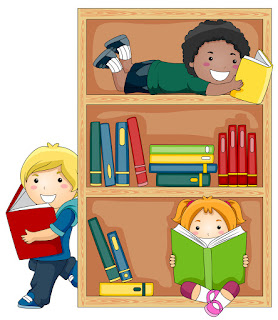These are the opening lines to a song from the musical South Pacific written by Rodgers and
Hammerstein in 1949.
You've got to be taught
To hate and fear,
You've got to be taught
From year to year,
It's got to be drummed
In your dear little ear
You've got to be carefully taught.
To hate and fear,
You've got to be taught
From year to year,
It's got to be drummed
In your dear little ear
You've got to be carefully taught.
Racism is not natural. We learn to be racists. Science
has established that racism is a “construct that is developed in our brains
over time.” In other words, it is learned behavior.
How is racism learned?
One way racism is learned is through segregation. Here I
refer, not to the legislated segregation of the Jim Crow south, but to the modern
version of segregation that finds the races separated through economic
inequity. The segregation that finds our schools, north and south, becoming
less and less racially diverse. Interestingly, it is not familiarity that
breeds contempt as the old saying goes, but familiarity that breeds tolerance
and understanding. Brain scientists have found that the more diverse your peer
group, the more tolerant your attitudes toward race.
Another way racism is learned is through symbolism. The flag
flying in view of the State House in Columbia, South Carolina is symbolic of
the subjugation of one race by another. It is a state sanctioned emblem of a
racist heritage that is something that South Carolina legislators think should be celebrated. The legislature of South
Carolina wishes to insure that its children inherit their legacy of racism.
Another way that racism is learned is through the denial
that it exists. Many articles were written, and many pundits claimed that the
election of an African American president proved that we were finally beyond
racism. This, however, was nothing more than a game that has been played for
decades in this country – the game of allowing the exception to disprove the
rule. It is the “good n******” game. The idea that by pointing to one isolated
example we can excuse ourselves from the racism that continues in every corner
of the country.
It is hard to imagine a white president having a finger
waved in his face in public, or having his State of the Union speech
interrupted by a Congressman yelling “You lie!” or by having his twitter
account greeted by thousands of overtly racist tweets. The election of an
African American president has not proven that racism is over; it has
demonstrated for a new generation of children how ingrained in our society it is.
Racism is carefully taught in this country, but because I am
a teacher the question is can it be untaught? What can a teacher do to combat
the American legacy of racism? I think we must acknowledge that our power to
unteach racism is limited because of growing inequity, social isolation of the
races and increasing segregation of schools, but still I must believe there is
something we can do.
First I believe we must be good models of tolerant, open
human beings. I am sure we all would like to consider ourselves free of racism,
but are we really? We must take the time to examine the messages we send to
children in the way we behave to those who are different from us. Schools,
being institutions, have never been very tolerant of individual differences,
whether those are learning differences, religious differences or racial
differences. Statistics on school suspensions, for example, would point to a
racial bias, just as our larger society’s prison population points to a racial
bias.
So a teacher’s quest for doing something about racism begins
with a close personal inventory of what kind of tolerant model we present to
the children. It continues with establishing classroom practices that encourage
tolerance. Here I think immediately of the Responsive Classroom design.
Responsive Classroom is a well-designed, effective approach to social and emotional
learning that helps children learn to respect each other through the respect
they themselves are shown by the teacher. Children, who feel emotionally and
socially secure in the classroom, are not only better learners, but are also on
the road to becoming better people who do not blame their difficulties on some
ill-defined “other.”
Secondly, I think of the humanizing power of good literature.
As teachers who need to be choosing books to read aloud to children that raise
our levels of understanding of all of humanity. We need to have classroom libraries that
invite children to explore diversity and to gain a better understanding of the
hearts and minds of people of all different racial, ethnic and religious
groups. Knowledge is not just power, knowledge, as scientific studies have
shown, breeds tolerance. The available books are many and wonderful. This link will take
you to Carol Hurst’s list to get you started.
Finally, I recommend the Teaching Tolerance program
sponsored by the Southern Poverty Leadership Conference. I have used these
materials in my own classroom and I have found them to be highly effective. Their website offers all sorts of high quality
materials for building lessons on tolerance. Their kits and materials are
free to teachers and valuable for everyone.
As teachers we often feel as if we are marching out into a
hurricane armed only with a flimsy umbrella. When it comes to the storm clouds
of racism hanging over the country, it may seem that there is little we can do.
But if racism can be learned, then I must believe that tolerance also can be
learned, and that the teacher is best positioned to provide those lessons in
tolerance so desperately needed. Because with tolerance as well as racism, “You’ve
got to be carefully taught.”





